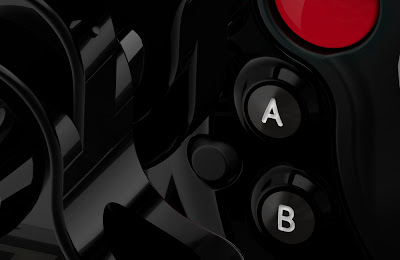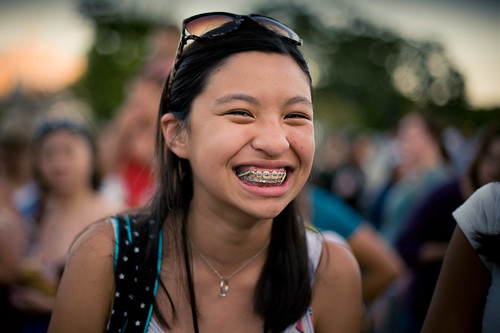
No milk in the fridge this morning, forcing me to make an Americano rather than my usual cappuccino. In that spirit, here’s an undiluted rant on cameras, DV Rebel priorities, and what we might hope to hear from RED next week.
What are you looking for in a camera? A big sensor? 2K? 4K? Raw? Uncompressed output?
What you should be looking for is a machine that transmits your creative energy into the images it makes.
The least friction between you and your images.
The fastest route to the emotional truth.

I shoot a lot of stills with a 50mm at f/1.4. The shallow depth of field helps me portray what I consider to be the emotional truth of a situation. But this practice is only feasible thanks to a hundred little details about the camera’s ergonomics and electronics. If any of those failed, I’d shallow-DOF myself right into a collection of unusable photos. My Canon 5D is more than just a box with a big sensor and fast glass. It’s a machine designed to create opportunities and then, when they arrive, to make sure I don’t miss them.
Many videographers find their first experience with a 35mm lens adapter to be quite a cold splash of water. The images from these rigs can look amazing—but it just became a whole lot more work to make them even acceptable. Your system got a whole lot less agile, your solution more brittle. The ways to mess up a shot grew in proportion to the potential for greatness.
- As soon as you have manual focus, you need a follow-focus, which means you need a rail system.
- As soon as you have a fast lens, you need a variety of ND filters, which means a matte box.
- As soon as you taste the glory of fast primes, you need more of them. You’ll never have enough. Time to go Pelican Case shopping.
- As soon as you have shallow depth of field, you need a big, sharp monitor and mad focusing skills (possibly provided by a second person). You will blow takes due to bad focus.
- As soon as you have a small camera, you need support gear for something as simple as prolonged handheld work.
- As soon as you have manual control, you need quick, intuitive access to that control.
Video cameras have long had solutions for all these things. Good autofocus and fingertip manual focus with LCD focus assist. Built-in ND filter wheels and well-placed toggle switches for common functions. Zebra overlays, histograms, waveform monitors, professional audio inputs and monitoring. And built-in lenses that zoom like crazy and focus from a millimeter to infinity.
The video camera manufactures aren’t winning any ergonomic battles these days. After the gloriously balanced DVX100, Panasonic gave us the unwieldy HVX200. Not to be outdone, Sony provided the wrist-wrenching EX1. Nevertheless, the video cameras of today are mature, evolved machines not just for making images, but for ensuring that you make exactly the image you want, with a minimum of fuss.
And yet not a single video camera under RED One’s price has a sensor bigger than your fingernail.
Along come these video-shooting DSLRs, with enourmous sensors, the wrong form-factor for video, and none of the features that turn an DVX100 into a battle-ready companion. They make awesome images, but they do so at the expense of the operator. When you only see the images, these cameras seem like they must be the best thing going. But the images are the result of a process, and that process is painful. It’s up to you to decide if sexy DOF is worth giving up control. As you make that decision, here are some things to bear in mind.
- It’s better for a film to have good audio than shallow depth of field.
- It’s better to have control over your camera than to shoot in HD.
- It’s better to have good lighting than raw 4K.
- It’s better to put time into color correction than visual effects.
- It’s not HD if it’s not in focus.
- There’s no such thing as a rough cut with no sound.
- Your story is told using the images you create, not the ones you intended to create.
- You’re not done editing until you’ve watched your film with an audience of people who don’t care about your feelings.
- Your film is still too long.
- Your next film will be better. How’s it coming?
(That last one is more for me than for you.)
The D90 and the 5D MarkII can make compelling moving images. But they are not yet cameras that will support your creative development as a filmmaker, growing with you as your skills develop. Did Vincent Laforet want Reverie to feel like a masterfully-lit soap opera? Did Matthew Bennettt want Subway to feel like the wobbly video from a jailbroken iPhone? We are at times seduced by aspects of these demo reels that are perennially absent in our video viewfinders, but we are not seeing the work of a cinematographer in full control of their craft. We’re seeing accidents—some happy, some not. Images borne of a battle with an uncooperative piece of kit. Mario Andretti doing his best with front-wheel drive and an automatic transmission.
This Thursday, when RED reveals their new cameras, I’ll be looking at features and specs along with everyone else. But I’ll also be evaluating whether these cameras seem to be filmmaking companions that allow me to craft an image intuitively and effortlessly. The camera should disappear, leaving only me and the images that, for better or worse, I created.
 Wednesday, November 26, 2008 at 8:43PM
Wednesday, November 26, 2008 at 8:43PM 









